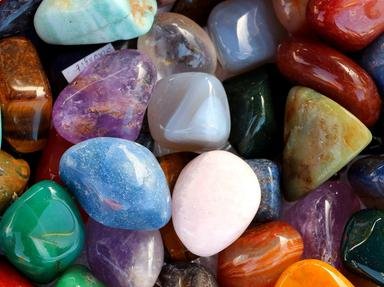Quiz Answer Key and Fun Facts
1. So you probably know that the January birthstone is a garnet, right? From what fruit does its name originate?
2. The February birthstone is an amethyst, but what malady is this precious stone said to cure?
3. The March birthstone is aquamarine, but this was not always the case. In the UK, what was the original birthstone of March up until 1912?
4. April's birthstone is a diamond, the jewel that all the girls want! Today it is common for engagement rings to be inset with a diamond, but one of the first records of this tradition dates to 1477. Which lucky lady received a diamond ring from her betrothed?
5. May's birthstone is the emerald. "The Emerald Isle" is a notable use of the gem to represent Ireland's green shores. Where, however, was the largest uncut emerald found in 1974?
6. June's birthstone is the pearl. Sourced from underwater, natural pearls have become increasingly rare. Cultured pearls, however, are being produced by man - meaning the creation of a pearl is being instigated artificially. When did this practice start?
7. Ruby is the birthstone for July. The stone is a variety of the mineral 'corundum', but what is it that gives rubies their red colour?
8. Peridot, the birthstone for August, was the national gem for which ancient civilisation?
9. The sapphire is the birthstone for September (my own birthstone!). There are many ancient theories regarding sapphires. One such theory is that the earth rested on a giant sapphire and its reflections turned the sky blue. Which civilisation believed this?
10. October's birthstone is the opal. True or false: opals were considered so unlucky by the Victorians that Queen Victoria ordered her daughters not to wear them.
11. The largest uncut topaz - the birthstone of November - was found in Brazil and weighed in at almost 600 pounds. It is displayed at which museum?
12. The turquoise is the traditional birthstone for December. True or false: it was highly regarded by the Ancient Egyptians and was even inlaid in the burial mask of Tutankhamen.
13. This fossilised resin has been used as a precious gem since prehistoric times, only being predated in use by the pearl. What is it?
14. Most of the lore of the carnelian comes from Ancient Egypt. It was used to still feelings of envy, hatred and rage which were associated with which Egyptian god?
15. Hecatolite is the alternative name for which revered gemstone?
Source: Author
ScottishGal
This quiz was reviewed by FunTrivia editor
Pagiedamon before going online.
Any errors found in FunTrivia content are routinely corrected through our feedback system.
